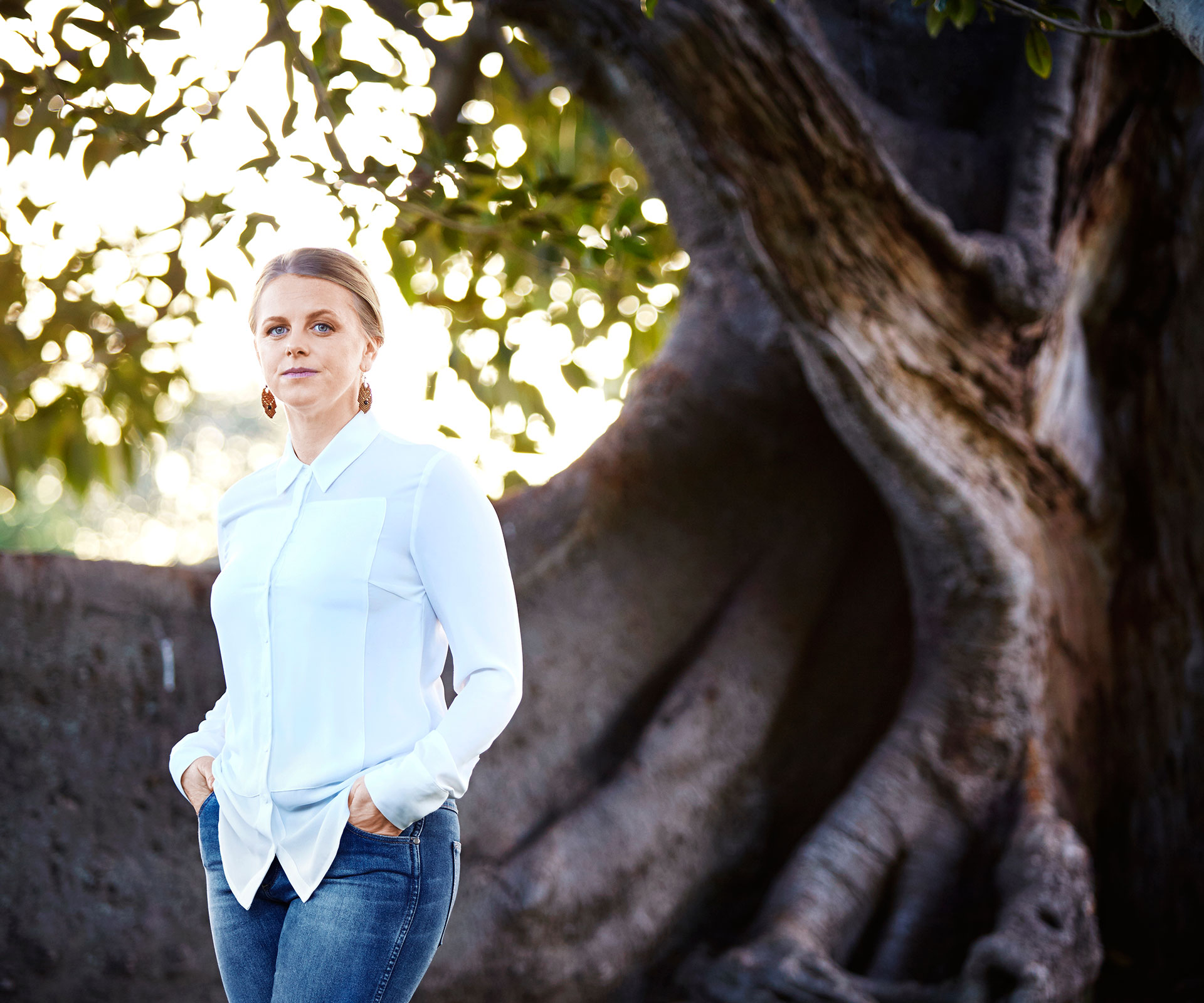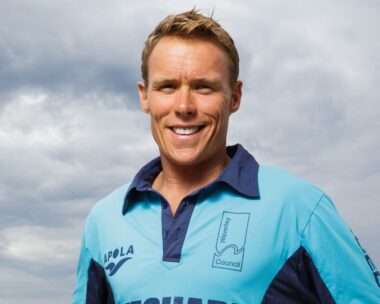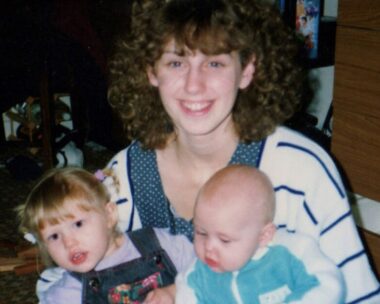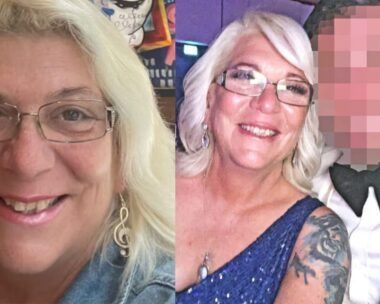Last October, a Médecins Sans Frontières hospital in Afghanistan was destroyed by a US AC-130 gunship. Australian doctor Kathleen Thomas was inside as the bombs and bullets rained down. She tells Beverley Hadgraft how she watched 42 of her friends and patients die, and how that terrifying experience has led to a deeply personal battle of her own.
Dr Kathleen Thomas knew the man on the makeshift operating table in front of her needed blood. She knew, too, that she shared his blood type and could provide it. Yet despite months of experience dealing with the worst that war-torn Afghanistan could throw at her, she couldn’t remember how to do that simple transfusion.

Dr Kathleen Thomas (front right in a blue head scarf) struggles to save a life just after the bombing. PHOTO: Supplied.
Fear and adrenalin had turned her brain to mud and she had none of the normal medical resources available to her. “I was tryingto figure out a way to get my blood into a bag and into him, but I couldn’t think through that simple problem. I was just going, ‘Holy shit, holy shit, how do I give blood?’,” she recalls.
Doctors routinely separate their emotions from their actions so they can focus on their patients’ injuries. Yet this was no normal patient – he was Kathleen’s dear friend and colleague Dr Amin Bajawri.
Nor were these normal circumstances. She and everyone around her had just endured an hour-long gunship attack on their hospital in Kunduz. Limbs had been blown off, shrapnel rocketed through bodies, 42 people had died, including 14 Médecins Sans Frontières (MSF) staff.
The murderous attack came at a time when the Kunduz Hospital medics were already physically, mentally and emotionally exhausted. For the past week, they had been dealing with the results of a Taliban offensive on their doorstep. Triage had collapsed under the pressure, patients were spilling into corridors and the smell of blood, wailing of grief-stricken parents and tut-tut-tut of nearby machine guns permeated every working second.
Although their families had begged them to leave, the dedicated staff stayed, believing the hospital was the one place in Kunduz where safety was guaranteed. Military personnel from all sides – the Taliban, the Afghan government, the US and its allies – had promised to abide by international laws which decree that hospitals cannot be attacked in war.
The combatants all knew the GPS co-ordinates for the hospital, so no mistake could be made, and prominent MSF flags flew outside. The distinctive cross-shaped building was the only one to have lights on as staff worked through the night, saving lives. Yet none of that had saved the hospital or the people sheltering there. No one could believe what had just happened.

Source: Google Maps.
Today, back in Australia, Kathleen has discovered a sickening truth; that while laws say otherwise, hospitals are not immune in warfare. The truth, she says, is that they are actively targeted. Appreciating that she is lucky to be alive, Kathleen has become an advocate calling for Australia to break its silence and demand that the rules of war protecting medical personnel and facilities are applied and that, if broken, the perpetrators are investigated and called to account.
An independent investigation into the American attack on Kunduz has never been held – Afghan and US authorities refused to give consent – and as a result the Kunduz trauma centre, the only one of its kind in northern Afghanistan, remains closed.
Kathleen produces a photo of one of the many patients now at risk as a result. Her name is Shaista, she is three. Her leg and part of her buttock and back were blown off in the conflict, necessitating a major amputation and a stoma bag. The night of the hospital bombing, Shaista had been recovering in the Intensive Care Unit (ICU) and was the only survivor after a nurse snatched her up and ran through the flames to save her.
Yet she needs ongoing treatment. Her family has sold everything they own to get her treatment in Pakistan. Today, they are left with nothing but their nightmares.

PHOTO: Andrew Quilty courtesy of Médecins Sans Frontières.
A hope to help…
Kathleen dreamed of working for MSF and making a difference in developing communities even before she started medical school. Once she felt confident and competent enough to make a contribution, she applied, then waited for an offer. When that offer was Afghanistan, “I felt a mixture of absolute excitement and absolute terror,” she says.
She and her partner Sascha Saharov, also a doctor, researched the issues extensively. “Together we came to the conclusion we thought it would be safe, that MSF running a hospital in a war zone had a level of protection in line with international humanitarian law. That’s what everyone at MSF believes,” she says.
In May 2015, Kathleen flew out for a six-month posting as the supervisor of the emergency department and intensive care unit at Kunduz. Newly refurbished in 2011, it had top facilities, including four much-needed life support machines.
Within hours of arrival, Kathleen was resuscitating a little girl who’d been electrocuted and for the next four months she barely stopped.
It was the start of the fighting season, so she’d work on the wards all day and be on the phone, checking on new admissions, all night. Often she’d have mass casualties – such as the group of teenagers hit by a stray missile while studying. She was constantly dealing with the horrific injuries caused by bomb blasts: deep wounds, massive loss of blood and constant infections.

PHOTO: Nick Cubbin.
Kathleen kept her spirits up with Skype calls home and by forging good friendships with her Afghan colleagues, who endlessly impressed with their dedication and work ethic. There was Dr Mohammad Osmani, for instance, loved by everyone for his enthusiasm, compassion and ready smile. He had recently quit Kunduz to specialise in ophthalmology in Kabul, about 340 kilometres to the south, but knowing the need for experienced doctors, returned every weekend to help out, driving eight hours across a dangerous mountain pass to reach his patients.
Then there were the ICU nurse and cleaner who told Kathleen of their plan to escape Afghanistan and get to Europe – a treacherous mission.
“I asked, ‘How could you risk your life for this?’” Kathleen recalls. “Dr Osmani told me, ‘But every day here we are dying. We have no security, no hope and no future for us or our children.’
“How could I complain of tiredness or get upset hearing that? I was a guest and would leave. The guys who lived here dealt with stress and trauma on a daily basis. They didn’t have an out.”

Shaista (pictured with her parents and brother) was lucky to survive, but lost a leg in the US attack. PHOTO: Andrew Quilty courtesy of Médecins Sans Frontières.
Keeping her head down to save lives…
Although the sounds of war were a constant, the fighting was mainly in the Kunduz districts, but at the end of September, the Taliban moved into the city, driving out the Afghan military. The fighting was fierce and the hospital was overwhelmed. “Every time I turned my back, a new patient would be laid down with major injuries and needed my attention.”
Kathleen ran between buildings, terrified of being hit by a stray bullet.
She had to make life or death decisions: can we help this person or not?
Staffing was her biggest challenge. It was too dangerous for anyone to leave the hospital, so she couldn’t get relief staff in or exhausted staff out. The three operating theatres worked round the clock with one anaesthetist running between them. Everyone snatched sleep when they could in a safe room 50m away from the main hospital or in the basement beneath.
For the first time, Kathleen saw her colleagues cry at the horror of what they were dealing with. She herself delivered three dead babies from mothers who’d just been sitting quietly at home when they were struck.

PHOTO: Andrew Quilty courtesy of Médecins Sans Frontières.
When the shelling started…
The night of the attack, on October 3, was relatively calm. Kathleen even saw a child outside the compound flying a kite. The surgeons decided to catch up on their workload and Kathleen on her sleep. She headed for the safe room.
At just past 2am, she was startled awake by a sound so loud she covered her ears to stop her eardrums she pulled on a headscarf, thinking she’d be needed in the hospital. As the gunfire continued, however, she realised it was too dangerous to step outside. She and the three nurses who were with her pushed the heavy metal door shut and sat in the pitch black, just listening.
“I felt this gripping fear. My whole body was shaking,” Kathleen recalls.
Twenty minutes later, they heard a voice. An emergency department nurse stood outside. Backlit, it was like a scene from a horror movie. His left arm was hanging from his body by a little piece of skin, a piece of metal was sticking out of his back. Blood ran from his eye and he was covered in thick dust.
As he collapsed, Kathleen dragged him inside. “Where were you when you were hit?”
“Inside the emergency department,” he replied.
Kathleen presumed he hadn’t understood her. “No, you weren’t inside. You were outside,” she insisted.
“I was inside,” he repeated. “Many have been hit. Many are dead.”
A phone rang. A logistician was trapped in the burning hospital, begging for help. By now, other staff members were streaming in, vomiting and screaming in shock and pain. Kathleen and her nurses did what they could to treat their injuries. The moment the machine gun fire stopped, they ran back to grab essential supplies, including much needed morphine.

The destroyed hospital. PHOTO: Andrew Quilty courtesy of Médecins Sans Frontières.
Friends lost
Kathleen breaks down as she recounts the list of friends she lost that night.
“The first was Tahseel, the pharmacy supervisor. He’d recently married and was expecting a child. He’d visited his family in Kabul, but risked his life to return. He was struck by a machine gun as he ran through the hospital. I saw him carried in. He was still alive, but I could see already it was too late and I had to move on. It was an awful moment.”
Dr Bajawri was brought in. Although everyone sensed that he was also past saving, they put him on a kitchen table and prepared to operate. A few minutes later, he also was gone.
Another young trainee, Dr Abdul Ghafar Ramakee arrived. He had two young sons and a wife, and had been desperate to join them in Kabul, but instead stayed with his patients. Now he was covered in debris and blind and deaf, the result of a pressure wave injury from a very close explosion. Luckily, that was temporary. He was able to explain he’d been in ICU when the first missile hit. The cleaner who had wanted to escape to Europe had been horribly injured. Two nurses were reduced to dust and bones in an instant. Dr Osmani died calling out for help that never came while his patients burned in their beds.
The sun was rising by the time Kathleen finally ventured outside. The sight of the devastated hospital, fires still smouldering, “took my breath away”.

PHOTO: Andrew Quilty courtesy of Médecins Sans Frontières.
A few hours later, she and the rest of the expats were evacuated. As they drove to the airport, Kathleen looked back at her Afghan friends left behind. “That was heartbreaking.”
At MSF’s headquarters in Brussels, a debriefing and remembrance ceremony were organised. There was much grief, but also astonishment and anger as MSF learned the attack had been perpetrated by an American gunship. “I couldn’t understand why they had targeted us,” Kathleen says.
There were allegations the Afghans had provided false intelligence claiming there were Taliban holed up in the hospital. Eventually, however, America admitted it was a “tragic mistake” caused by a catalogue of human and machine errors.
A 3000-page investigation by the US military, only one-third of which was released (and that heavily redacted), concluded the crew of the gunship didn’t know they were striking a medical facility. They claimed they were targeting the National Directorate of Security headquarters 400m away.
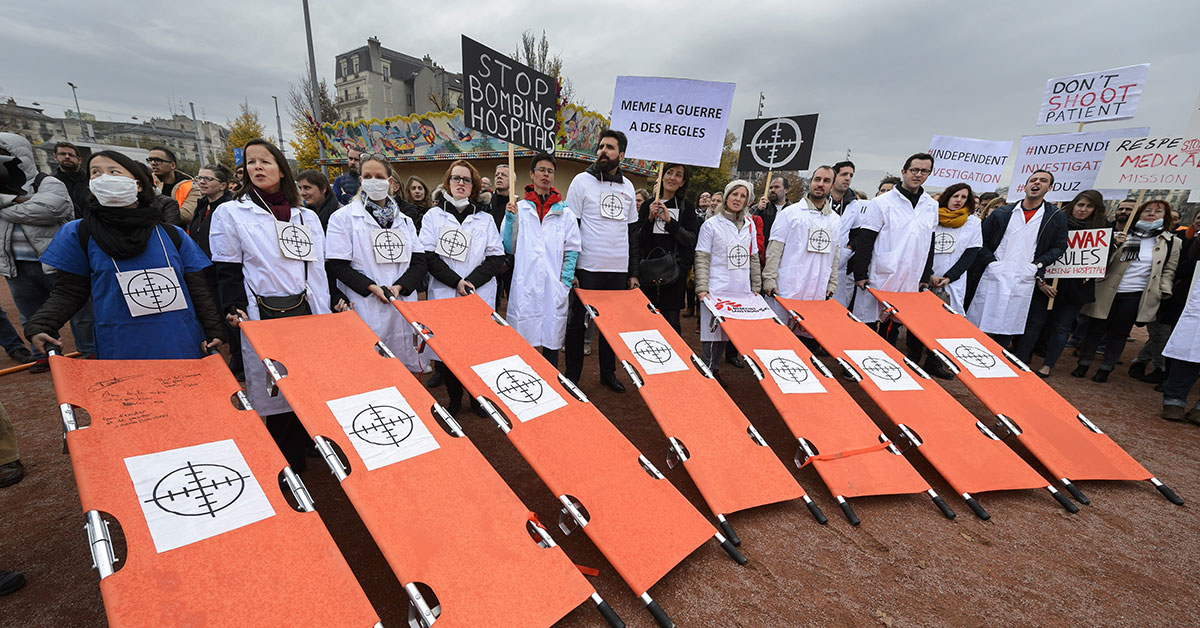
Médecins Sans Frontières staff protest in Geneva a month after the attack. MSF is calling for an independent inquiry.
On Australian soil the fight continues…
Back home in Wollongong, reunited with Sascha and readjusting to work in a Sydney hospital, Kathleen started noticing that Kunduz wasn’t the only hospital to be hit by armed forces. Hospitals had also been hit in Yemen, Syria, Ukraine and Sudan. In 2015 alone, a shocking 75 MSF or MSF-associated hospitals were attacked.
These were no accidents. Evidence suggested they were deliberate tactics of warfare. There were even reports of double tap bombs – when the military drops one bomb, then cruelly waits for rescuers to arrive before dropping the second. On May 3 this year, the UN Security Council passed a resolution ordering forces to stop attacking hospitals in war zones.
However, this is difficult to enforce unless other countries use their political influence and, so far, they haven’t, so Kathleen is urging readers to write to politicians. “By not demanding the protection of patients and care-givers in war zones or pushing the US to accept an independent investigation, Australia tacitly accepts a world where war has no rules,” she says. “Already in Syria [where there have been nearly 350 attacks on hospitals] and Yemen, they’re building hospitals underground and don’t reveal their GPS co-ordinates. I don’t know how those brave doctors and nurses keep working there.”
Today, Kathleen, 32, is still in contact with her colleagues in Kunduz. Everyone is desperate for the hospital to reopen but that can’t happen because they can’t get a guarantee the facility will be respected. “It’s devastating,” she says. “And it’s hard sitting here in my lovely peaceful country. I’d definitely go back and work for MSF. Once your eyes are open, it’s hard to close them again.”
How you can help
To make a donation to Médecins Sans Frontières, go to msf.org.au/donate. You can also use the #NotATarget hashtag on social media to show solidarity for patients and medical staff in hospitals in areas of conflict. If you would like to write to your politician, Kathleen has prepared a template letter.
Go to the “Take Action” page of stopbombinghospitals.org
A version of this story was first published in the September 2016 issue of Australian Women’s Weekly.
